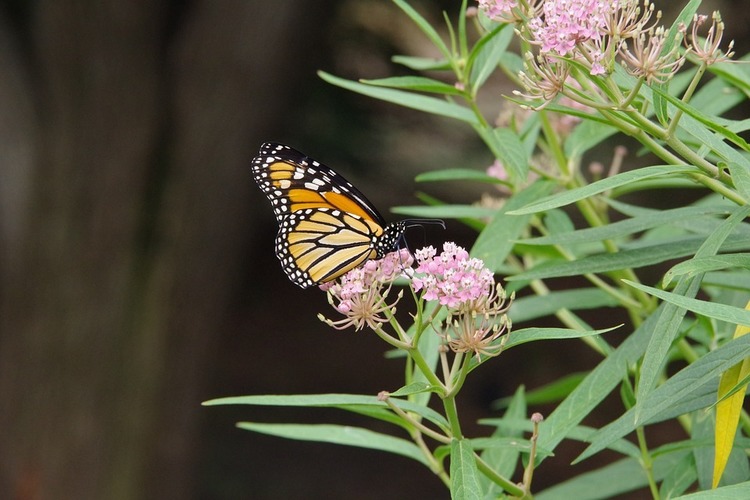




Throughout the Botanical Garden you will find lots of native plants, but in the Ozark Native garden you will only find native plants. Native plants, like the native butterflies in our butterfly house, belong in this area and have adapted to this environment. Many people garden with non-native plants from far off places like Asia. Sometimes there is no problem with this, but other times these non-native plants can be invasive and take over the entire ecosystems. This is bad because of that concept of biodiversity that we talked about on the Great Lawn, we need lots of different plants in an ecosystem to support a lot of different insects.
The native butterflies of the Ozarks need native plants. Like we discussed, the caterpillars need a host plant and most caterpillars only have one or a few host plants. Therefore, native plants are very important for our native butterflies. In this garden, try to find the milkweed plant. There are signs near the ground throughout the garden that identify plants, see if you can find one that says milkweed?
Have you heard of milkweed before? It is the only plant that the Monarch caterpillar can eat. If we do not have milkweed, we will not have monarchs.
Milkweed also has an added benefit for the monarch as it contains a milky sap that is toxic. It is not toxic to the caterpillar, however, once the monarch caterpillar eats milkweed it becomes very toxic to eat and if a bird eats a monarch it will become very sick and probably never try that bug again.
Look around and see what other native plants you can discover.